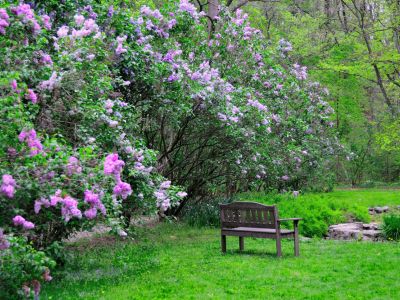To select bushes for old-time gardens, go for the tried and true, the shrubs you remember from grandma’s house. Or pick from our short list of favorite old-fashioned shrubs.
Why Plant Old-Style Shrubs?
Anyone lucky enough to come into possession of a house built long ago will need to work as hard on the landscaping as on the home renovations. Old-style shrubs and vintage garden plants complete the ambiance only an old home can offer. Shrubs and bushes were so common in yesteryear that they are considered a traditional landscape planting for heritage houses. If you are wondering how to use bushes for old-time gardens, consider how they were used historically. Generally, this includes foundation plantings, topiaries, and hedging.
Using Old-Fashioned Shrubs
What exactly is foundation planting? The meaning has changed over the years. Originally, foundation plantings were rows of shrubs planted close to a home in order to hide its foundation. Today, that is no longer a thing, since the stone foundations of period homes are considered a wonderful addition and not something to be covered up. Modern foundation planting means shrubs planted beside a house to soften the landscape lines, forming a “bridge” between the vertical surface of the home’s walls and the horizontal surface of the lawn. Plant old-style shrubs near the corners where the contrast is most dramatic. Shrubs can also be planted as standalones or in clusters to draw a viewer’s eyes to a long vista. Topiaries are shrubs sheared into fancifully shaped designs. These give elegance or whimsy to a landscape, in contrast to row shrubs that serve as formal or informal hedges. Hedges are a classic element in a vintage garden and provide “green” barriers to sound and sight.
Favorite Old-Fashioned Shrubs
There are no hard and fast rules about which shrubs elicit that old-fashioned feel, so if you remember some from your grandparent’s yard, don’t hesitate to consider them. However, if you want a few ideas for flowering shrubs widely planted generations ago, here are three favorites to add old-fashioned charm to your garden.
Forsythia (Forsythia spp.) – Forsythia is considered to herald spring with an early and stunning display of yellow blossoms; it grows to 10 feet tall (3 m.) in USDA zone 6.
Lilac (Syringa spp.) – Lilac was a feature in home landscapes most of the twentieth century, offering fragrant purple or violet flowers on bushes 12 feet (4 m.) tall, in zones 3 through 7.
Hydrangea (Hydrangea spp.) – For that old-fashioned look, pick smooth hydrangea with its huge, snowball-white blossom clusters, or bigleaf, with the same clusters in pink or blue based on the soil’s pH. They thrive in USDA zones 3 through 8.
